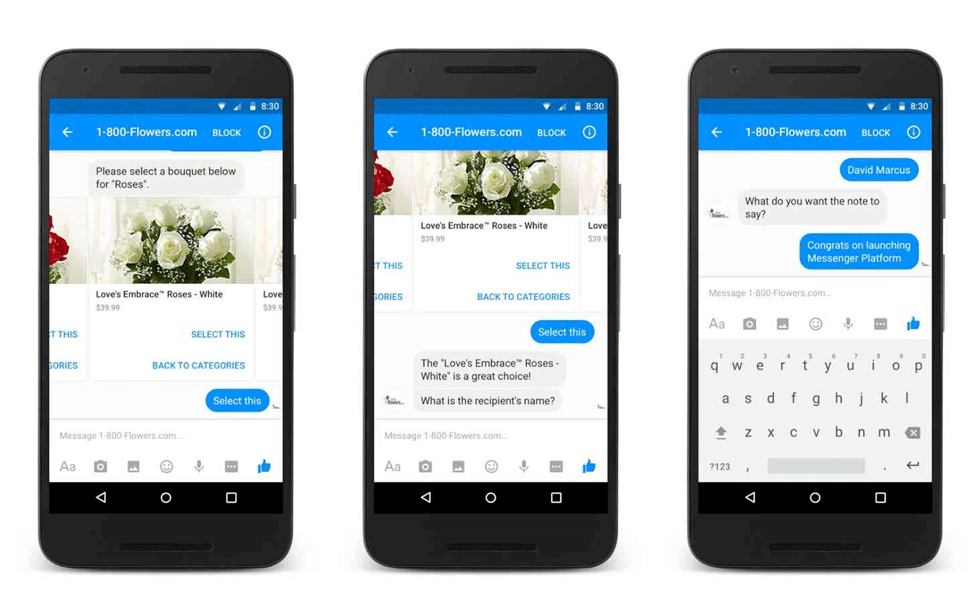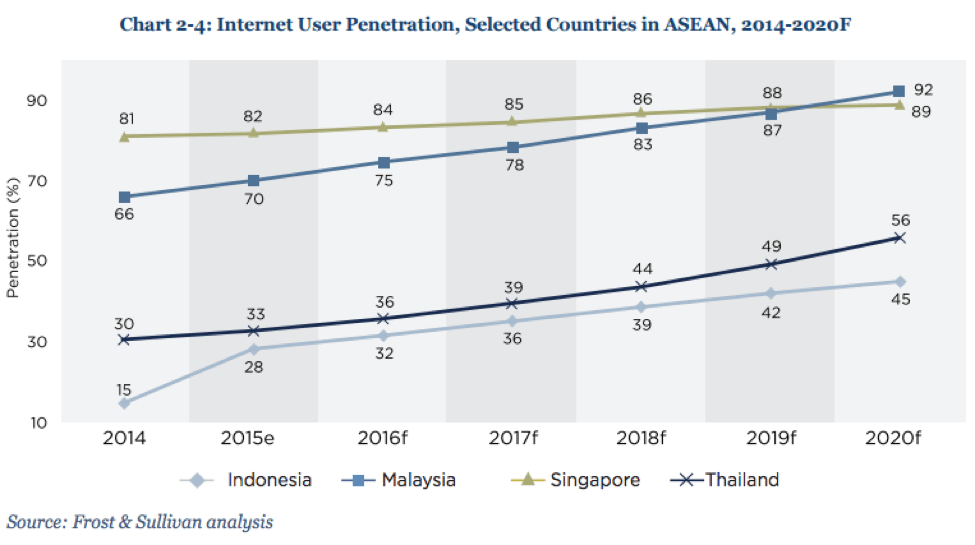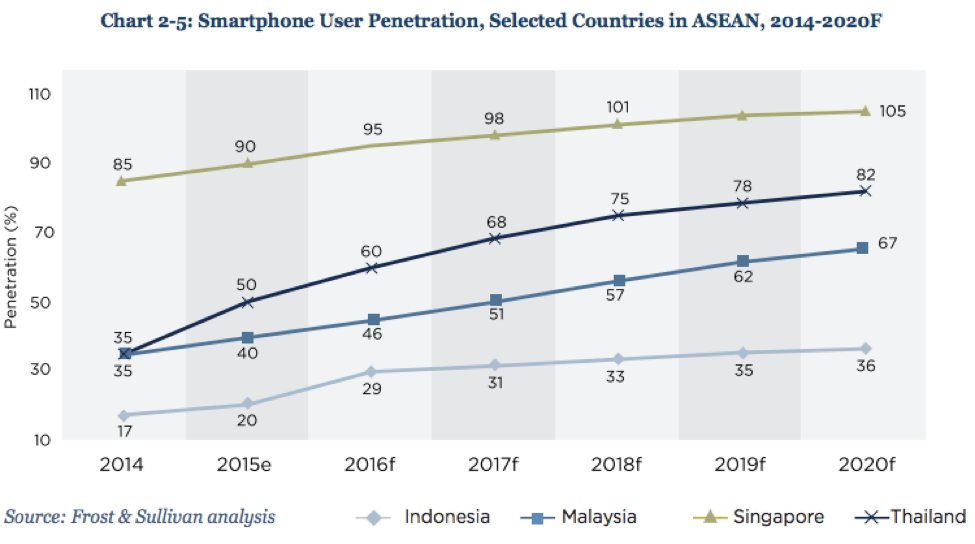How chatbots can help provide the win-win solution businesses have been looking for

Image Credit: Paula Lavalle on Unsplash
With Facebook now trialing their new messenger-based payment system in Thailand, the Southeast Asian region is rapidly growing into its social commerce potential. As messaging begins to dominate social interactivity, it is no surprise that businesses are now turning to this platform to inform, understand and sell to their customers. The next stage of this technological revolution is clear: automated robots that can interact with customers to drive and facilitate sales, simulate human conversation and carry out repetitive tasks.
Need help finding shoes to match a outfit? Imagine typing in “what shoes will match this outfit?” followed by a photo of what you’re wearing, and then having the algorithm instantly analyse and respond with three different options that fit your criteria. Imagine being able to complete your purchase without leaving the messaging app. Businesses are providing their customers with a convenient, time-saving and easy to use service. Win win.
Also Read: This startup is using WeChat chatbots to scale english learning
What chatbots are doing today
There are many different types of chatbots in the e-commerce sphere, made to serve different purposes such as answering customer queries, providing product recommendations, and simplifying online purchases. Here are a few examples of what is currently being done in the world wide web of chatbots:
Facebook Messenger
When Facebook announced the integration of e-commerce capabilities within its widely-popular Messenger app at the company’s F8 developer conference in April, CEO Mark Zuckerberg demonstrated how quick and easy it was to send flowers. With 1-800-Flowers, users are given suggestions for a variety of occasions (“Thank Yous”, “Birthdays”, and “Love & Romance”), and all details are obtained directly through the chat interface.

Businesses are already investing a notable portion of their marketing budgets in maintaining personable and engaging Facebook pages to complement their brands and drive traffic to their website, it is a logical transition for them to also adopt a chatbot within Facebook’s native messaging app.
Kik
Kik is another social media platform that has become increasingly popular in the US with more than 270 million users. Its chatbot service has drawn attention by many well known companies – one of them being makeup retailer Sephora. Not only has their chatbot service provided a method for users to purchase products, but also allows them to ask about anything regarding beauty, reviews, product recommendations and tips. The exchanges are sprinkled with emoji’s to make the automated reply appear like a true human brand representative at the other end.

WeChat
With over 760 million monthly active users, WeChat has positioned itself as the dominant messaging app in China. However, its features extend way beyond chatting: without having to leave the app, users can order food, book a taxi, book doctors appointments, follow their favorite brands and pay their bills, just to name a few. Through WeChat, Nike created a chatbot that provides fans with news and updates on the company, and consistently communicates with the user.

Also Read: India’s Mypoolin is bringin’ the chatbot to P2P payments
Why chatbots? Why now?
Growing Internet penetration
A primary factor currently driving e-commerce and soon the chatbot revolution in Southeast Asia is the growing number of people who are increasingly using the Internet. The 199 million Internet users in 2014 is predicted to increase to 294 million users by 2017. Out of the 150 million digital consumers who search for products online, two-thirds of them proceed to make purchases there.

Internet penetration in selected Southeast Asian countries
Mobile is King

Smartphone user penetration in selected Southeast Asian countries
For users, traditional methods of e-commerce –opening browser, navigating through countless pages and items, and keying in details to check out– still feels tedious and unnatural on mobile thanks to small screen sizes and limited ability to multitask. Businesses need to come up with an alternative solution to ensure that the purchase process is as simple as possible on these devices. The chatbot interface takes advantage of what behaviour people have adopted with mobile phones: carry out conversations, anywhere, anytime.
The app bloodbath
Thanks to the introduction of the iPhone back in 2007, apps have played a huge role in shaping technology, contributing to the dependence on our phones. But the thing is, consumers are growing sick of trying new apps, coming to the realisation that they simply don’t need so many. Not only are they costly to build setting you back anywhere from US$50,000 to US$1 million, but further efforts need to be invested into marketing the app, and getting users to download and regularly use it. With a saturation of apps in both the Apple and Android app stores, and limited app discovery tools, it’s becoming harder and harder for new players to cut through the noise.
Smartphone users spend most of their screen time on a single app, which means, as a business, that is where you have to be.
Also Read: Chatbot is the new app: Ratan Tata invests in AI-based chatbot startup Niki
Messaging: The new platform
Creating chatbots within existing messaging apps is attractive because someone else has already done a large chunk of the hard work for you. In Southeast Asia, there are over 73 million people on LINE. Integrated chatbots give businesses the opportunity to directly reach these large pools of users without forcing potential customers to download yet another application.
“Messaging apps are the platforms of the future, and bots will be how their users access all sorts of services.” — Peter Rojas, Entrepreneur in Residence at Betaworks
Furthermore, these companies are providing developers APIs so that it is easier for businesses to create their own bots since most don’t have the technical skills or resources needed to build a witty chatbot from scratch. And in return, the platform is loaded with customer data; a dream for any marketer. With the versatility evident through Facebook ads that allow businesses to target audiences based on anything from location to interests, imagine the degree of personalisation and segmentation that could be made possible through their Messenger extension.
A society of social commerce
The Southeast Asian economy already heavily engages in social commerce, a marketplace built within the walls of social media. According to a Bain & Company study released this year, more than 80 per cent of digital consumers use social media or messaging apps to research products and connect with sellers. Moreover, social sales comprise of up to 30 per cent of all transactions online. Thailand boasts the world’s largest C2C market, with over 50 per cent of research respondents saying that they buy items found on social networks such as Facebook and Instagram.

A typical social transaction: users find items they are interested in, and get in touch with the seller who listed the item via chat.
Source: ecommerceIQ exclusive research
The magic of chatbots is that they are able to closely imitate the essence of conversational commerce. Set within the same interface, customers can talk with bots in a similar manner in which they would talk to human sellers through a series of questions and responses. In such a setting, algorithms may even be created to simulate the bargaining dialogue that occurs in everyday transactions.
Still some way to go
Through chatbots, businesses have the opportunity to initiate conversation directly with their target consumer that is highly personable. The brand-to-customer interaction is something that has not truly been scalable until now. While chatbots can not replace the feature-rich user interface provided by a website, they bridge the gap between functionality and convenience.
“Every brand is going to move into the mobile commerce space very quickly. In the next years, we will probably see 20 to 30 per cent of the big brands having their own bots in chat apps, starting with Facebook’s messenger platform.” — Pat Wattanavinit, Product Manager at aCommerce
The current state of chatbot functions are still quite linear and rigid, too early for companies to start replacing their customer representatives. Some users report conversations as being frustrating and slow due to the bot’s limited understanding and capabilities, think about your own interactions with Siri. Chatbots won’t truly be invaluable and gratifying until AI is able to achieve a human level of understanding but that’s another story in itself.
—
Written by Shirley Liu and Alexandre Henry.
The article was first published in ecommerceIQ.
The post The rise of chatbots: targetting Southeast Asia’s booming chat commerce space appeared first on e27.